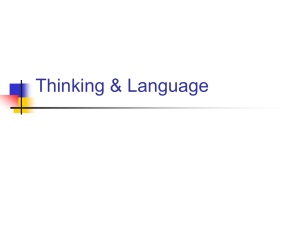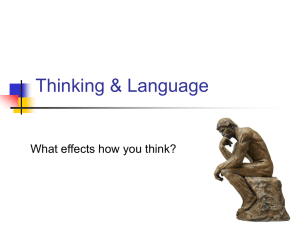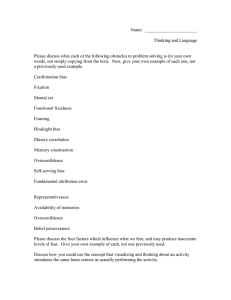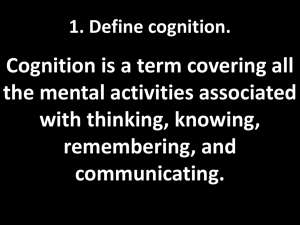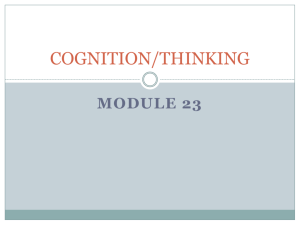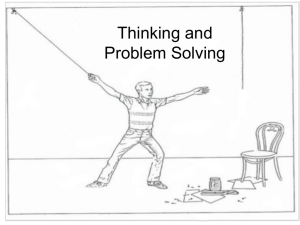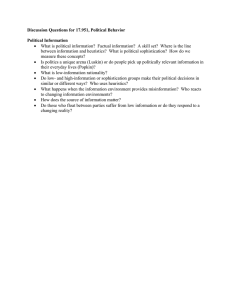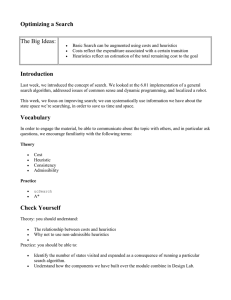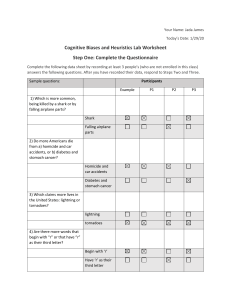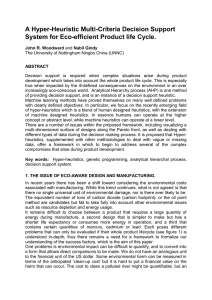Thinking & Language
advertisement
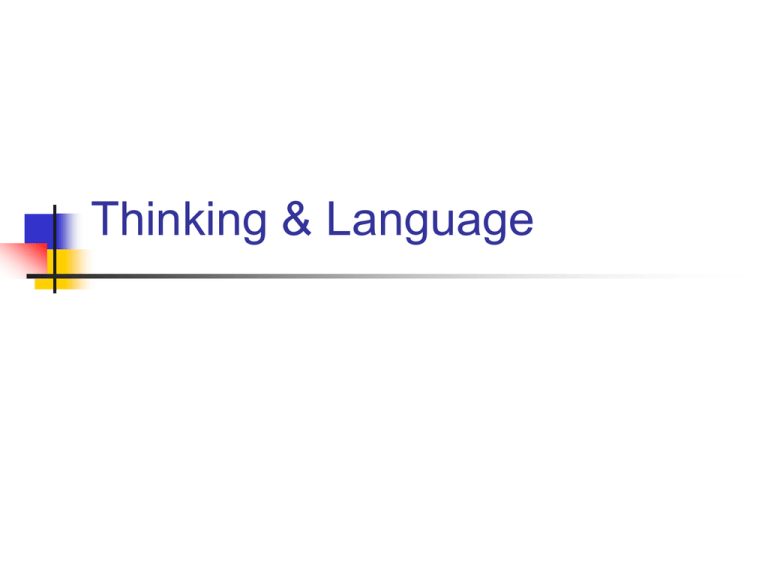
Thinking & Language Obstacles to problem solving Confirmation bias Looking for and accepting evidence that supports our preconceived ideas. “Don’t bother me with the facts,I have made up my mind.” Makes it difficult to consider contradictory information. Fixation Inability to see a problem from a new viewpoint. Mental set We see what we expect What worked in the past Makes it difficult to see a problem differently. Functional fixedness Seeing things only one way Makes it difficult to see different uses for things. Heuristics Mental shortcuts Often helpful, but can cause problems. Heuristics Representativeness This person is representative of (similar to) this group. Therefore, he has these characteristics Availability An available (memorable) clear powerful memory is more powerful than a statistical reality. We over feel and under think E.g. Deaths from 9/11 VS smoking Heuristics Overconfidence We tend to overestimate our own abilities and underestimate others. Stock purchases - E.g. E-trade, or Charles Schwab online trades Reality rarely reduces their overconfidence in the next situation. Heuristics Belief perseverance When given mixed evidence, two opposing parties will actually increase their disagreement. We believe only what supports our preexisting beliefs Prejudice persists because once formed, opposing evidence is rejected. What you can do: Consider the opposite (or argue the other‘s point of view). E.g. Family therapy Framing We judge things differently based on how the information is presented. 10% die VS. 90% survival rate of an operation “Aid to the needy” vs.”Welfare” “Cloning” vs. “Nuclear cell transfer” “Opt in” vs. “Opt out” Divorce = Sin vs. independence You can change people’s perception of a situation by reframing it. Fear We fear: 1. What evolution and our ancestral history prepared us to fear. 2. What we can not control E.g. flying vs. smoking. 4. What is most memorable E.g. Tandem jump VS static line 3. What is immediate VS. long term E.g. heights and spiders E.g. 9/11 vs. traffic deaths Result: Check your fears against the facts We fear too little events that claim lives undramatically. Thought problems to avoid 1. Hindsight bias “I knew it all along.” - After you know the result. 2. Illusory correlation Thinking 2 things are related when they are not. E.g. adoption and pregnancy 3. Memory Construction Misinformation can create false memories Thought problems to avoid 4. Self serving bias Inflated self assessments E.g. If I do well I take the credit If I do poorly, others are to blame 5. Fundamental attribution error Attributing behavior of others to their disposition (personality) and ignoring the environment. E.g. The homeless person is just lazy
